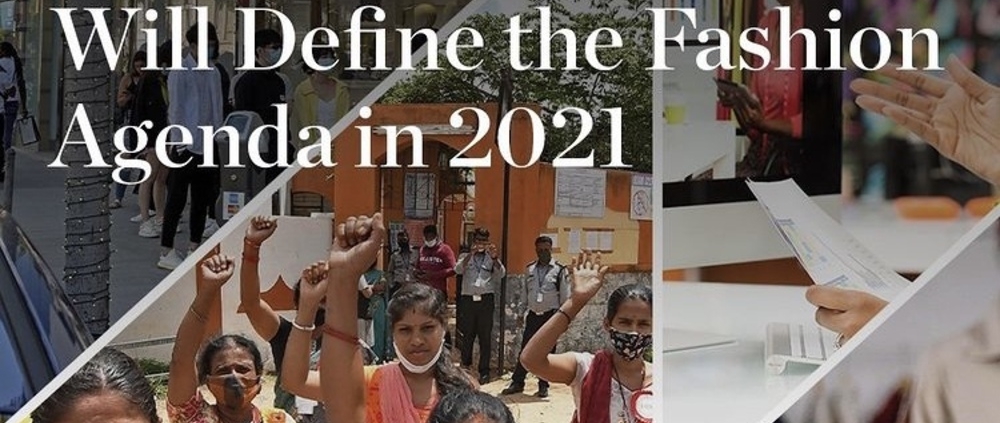The 10 themes for a 2021 fashion agenda
The 10 themes for a 2021 fashion agenda
Business of Fashion, one of the largest fashion platforms in the world, lists the 10 themes that will define the fashion industry in 2021.
The change caused by the Covid-19 crisis in consumer behavior and markets will force companies to find the right way to discover digital innovation and reimagine physical retail.
- Living with the virus
The Covid-19 crisis affected millions of people, and interrupted international trade, travel, economy and consumer behavior.
In order to manage the levels of uncertainty in 2021, companies should rewire their operating models to enable flexibility and faster decision-making, and balance speed against discipline in the pursuit of innovation.
- Diminished Demand
After the 2020 recession, the global economy is expected to partially recover in the coming year, but economic growth will remain diminished relative to pre-pandemic levels. In fashion, with unemployment and growing inequality, companies should seize new opportunities and double down on outperforming categories and channels.
- Digital Sprint
Digital adoption has soared during the pandemic, with many brands going online and embracing digital innovations. With acceleration and demand for increasingly sophisticated digital interactions, the fashion market must optimize online experience and the mix of channels.
- Seeking Justice
During crisis, consumers became more aware of the plight of vulnerable employees in the fashion value chain. As the drive for change grows along with campaigns to end exploitation, consumers are looking for more dignity, security and justice for workers across the global industry.
- Travel Interrupted
The travel and tourism retail sector suffered throughout 2020. International tourism is expected to remain subdued in the coming year, and companies will need to become better involved with local consumers, make strategic investments in markets with greater recovery, and seek new opportunities to recover customer purchases.
- Less is More
After demonstrating that more products and collections do not necessarily yield better financial results, the Covid-19 crisis highlighted the need for a change in the profitability mindset.
Companies need to reduce complexity and find ways to increase the total sales price to reduce inventory levels, taking a demand-focused approach to their assortment strategy, while increasing flexible reactivity during the season for new products and replenishment.
- Opportunistic Investment
Performance polarisation in the fashion industry accelerated during the pandemic.
In 2021, mergers and acquisitions are expected to increase as companies gain market share and new opportunities, expanding capabilities.
- Deeper partnerships
By exposing the vulnerability of purchasing partners, the weakness of contracts and the risks of the supplier, the crisis accelerated many changes that companies were already making to rebalance their supply chains.
To mitigate future risks, fashion players must move away from transactional relationships in favor of deeper partnerships that bring greater agility and accountability.
- Retail ROI
Physical retail has been in a downward spiral for years and the number of permanent store closure will continue to rise in the post-pandemic period, compelling fashion players to rethink their retail footprints.
- Work revolution
Driven by fundamental changes in the way companies worked during the pandemic and the need to drive performance in the years to come, an enduring new model for work is likely to emerge.
Companies should therefore refine their blends of remote and on-premises work, invest in reskilling talent and instil a greater sense of shared purpose and belonging for employees.





